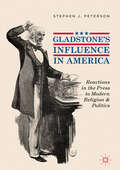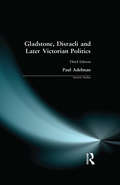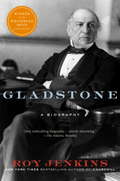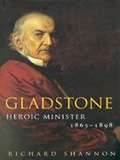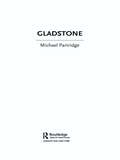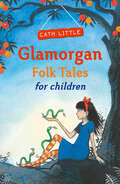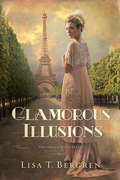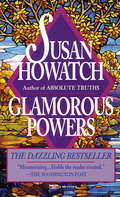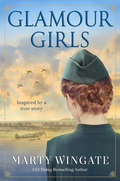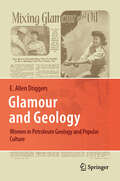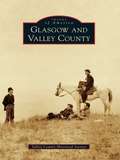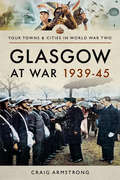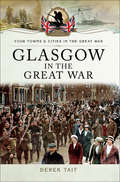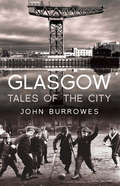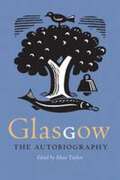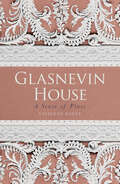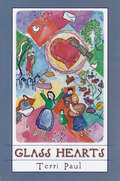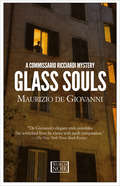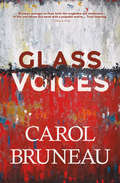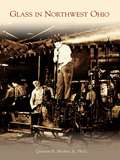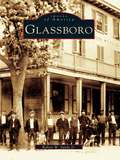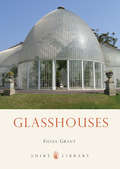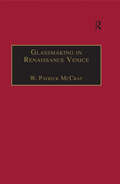- Table View
- List View
Gladstone's Influence in America: Reactions in the Press to Modern Religion and Politics
by Stephen J. PetersonBy the end of the nineteenth century, William Gladstone was arguably the most popular statesman in America since Lincoln. How did a British prime minister achieve such fame in an era of troubled Anglo-American relations? And what do press reactions to Gladstone’s policies and published writings reveal about American society? Tracing Gladstone’s growing fame in the United States, beginning with his first term as prime minister in 1868 until his death in 1898, this volume focuses on periodicals of the era to illuminate how Americans responded to modern influences in religion and politics. His forays into religious controversy highlight the extent to which faith influenced the American cult of Gladstone. Coverage of Gladstone’s involvement in issues such as church disestablishment, papal infallibility, Christian orthodoxy, atheism and agnosticism, faith and science, and liberal theology reveal deepening religious and cultural rifts in American society. Gladstone’s Influence in America offers the most comprehensive picture to date of the statesman’s reputation in the United States.
Gladstone, Disraeli and Later Victorian Politics (Seminar Studies)
by Paul AdelmanA major new edition of this introductory survey of the two main political parties, from the rise of the Liberal Party under Gladstone until the period of Conservative domination under Salisbury in the late nineteenth century. As well as assessing the impact of major political landmarks such as the Great Reform Acts, it also describes the nineteenth century political scene.
Gladstone, Gordon and the Sudan Wars: The Battle over Imperial Invention in the Victorian Age
by Fergus NicollGeneral Gordons death in Khartoum on 26 January 1885 and the fall of the besieged city to the forces of the Mahdi was a crucial episode in British imperial history. It was deeply controversial at the time, and it still is today. Gordon has routinely been depicted as the hero of the story, in contrast to Prime Minister Gladstone who is often portrayed as the villain of the piece, responsible for a policy of drift in Sudan.Fergus Nicolls radical reappraisal, which is based on eyewitness accounts and previously unpublished archive material, refutes the conventional image of both men. Presenting an inside view of Gladstones thinking and decision-making, Nicoll gives the prime minister credit for his steadfast insistence that Britain should have minimal engagement in and zero responsibility for Sudan. Gordon, who succumbed to a lasting mania that skewed his decision-making and undermined his military capacity, is cast in a more sceptical light. This fascinating insight into British policy in Africa exposes the inner workings of government, the influence of the press and public opinion and the power of a book to change a government.Each stage in the rapid sequence of events is reconsidered Gladstones steely determination to avoid involvement, Gordons partial evacuation of Khartoum, the siege, the despatch of the relief expedition that arrived too late, the abandonment of Sudan, and the subsequent political battle over responsibility. The personal cost to both men was great: Gordon lost his life and Gladstone saw his reputation gravely tarnished.
Gladstone: A Biography
by Roy JenkinsFrom the New York Times bestselling author of Churchill, a towering historical biography. William Gladstone was, with Tennyson, Newman, Dickens, Carlyle, and Darwin, one of the stars of nineteenth-century British life. He spent sixty-three of his eighty-nine years in the House of Commons and was prime minister four times, a unique accomplishment. From his critical role in the formation of the Liberal Party to his preoccupation with the cause of Irish Home Rule, he was a commanding politician and statesman nonpareil. But Gladstone the man was much more: a classical scholar, a wide-ranging author, a vociferous participant in all the great theological debates of the day, a voracious reader, and an avid walker who chopped down trees for recreation. He was also a man obsessed with the idea of his own sinfulness, prone to self-flagellation and persistent in the practice of accosting prostitutes on the street and attempting to persuade them of the errors of their ways. This full and deep portrait of a complicated man offers a sweeping picture of a tumultuous century in British history, and is also a brilliant example of the biographer's art.
Gladstone: Heroic Minister 1865-1898
by Richard ShannonA careful examination of Gladstone's contributions to England's Parliamentary system.
Gladstone: Palmerston, Disraeli And Gladstone By Their Contemporaries (Routledge Historical Biographies)
by Michael PartridgeGladstone is one of the most important political figures in modern British history. He held the office of Prime Minister four times during a turbulent and changing time in Britain's history. Michael Partridge provides a new survey of Gladstone's life and career, placing him firmly in the context of nineteenth-century Britain, and covering both his intriguing private life and his public career. Surveying a broad range of source material, Partridge begins by looking at Gladstone's early life, education and entry to Parliament, before looking at his marriage and service with Peel. He goes on to look in detail at Gladstone's terms as prime minister concluding with his fourth ministry, when Gladstone, by now in his eighties, returned to power. He tried and failed to resolve the problems of Ireland, which had become his great obsession, for the last time and eventually retired from politics in 1894 and died a few years later.
Glamorgan Folk Tales for Children
by Cath LittleHow do you get rid of a bothersome giant? Have you got a secret like Effie? And what would you do with an invisibility seed? Some of these stories from Glamorgan are strange and sad, some are a bit scary and some are a bit mad. Our ancestors first told them long ago, and people liked them so much they kept passing them on. These stories of magic and adventure belong to everyone. They are meant to be told. Read them, tell them and pass them on yourself! Storyteller Cath Little has gathered together this enchanting collection of tales, illustrated by fellow storyteller and illustrator Peter Stevenson. Told in Cath’s captivating style, these stories will be especially enjoyed by primary school-aged children.
Glamorous Illusions
by Lisa T. BergrenWhen Cora Kensington learns she is the illegitimate daughter of a copper king, her life changes forever. Even as she explores Europe with her new family, she discovers that the most valuable journey is within. The first book in the Grand Tour series takes you from the farms of Montana through England and France on an adventure of forgiveness, spiritual awakening, and self-discovery.
Glamorous Powers (Church of England #2)
by Susan Howatch"Fascinating...convincing...believable." NEWSDAY. The time is 1940. Jonathan Darrow is an Anglican priest when he receives a shattering vision and knows he must leave the monastery that has been his home for seventeen years. As he plunges into the temptations of the real world, a crisis sends him into the labyrinth of his past to pluck out the buried truth beneath the deceptions he has been living through.
Glamour Girls: A Novel
by Marty WingateUSA Today bestselling author Marty Wingate's historical debut is "like reading a personal diary of the brave women who were unsung heroes of WWII," (Rhys Bowen, Royal Spyness mysteries) and will delight readers of Kelly Rimmer's The Things We Cannot Say and Noelle Salazar's The Flight Girls.During World War II, farmer's daughter Rosalie Wright becomes a pilot assisting the RAF. But will a romantic rivalry send her aerial dreams plummeting to earth?Ever since she was 10 years old, Rosalie Wright's eyes have been on the skies. But at the age of 18, on the verge of earning her pilot's license, the English farmer's daughter watches her dreams of becoming an aviatrix fly away without her. Britain's entry into World War II brings civilian aviation to a standstill. Then, Rosalie's father dies, leaving her, her mother, and her brothers to run the farm.Everything changes when she learns that the Air Transport Authority is recruiting women pilots to ferry warplanes across Britain to RAF bases. Despite her mother's objections, Rosalie cannot resist the call of her country--and the lure of the skies. During her training on Gipsy Moth aircraft, Rosalie forms a fast friendship with fellow flyer Caroline Andrews. Her trusty Ferry Pilots Notebook by her side, Rosalie delivers to five airfields in a day--while fighting an endless battle against skeptical male pilots and ground crews.She would much rather spend her time on the wing than on the arm of any man...until she meets gruff pilot Snug Durrant and RAF squadron leader Alan Chersey. Snug is a cynical, wisecracking playboy, and Alan is every WAAF's heartthrob...and Rosalie catches both their eyes. As the war drags on, and casualties mount, will love and tragedy send Rosalie's exhilarating airborne life crashing to the ground?
Glamour and Geology: Women in Petroleum Geology and Popular Culture
by E. Allen DriggersDuring the twentieth century, especially during World War II, female geologists were potrayed as having a glamourous and unique job. Newspapers, the oil industry, and other publications published stories about the glamorous working geologist, comparing them to movie stars and scientists working on the important production of oil. This book explores the image of the female geologist as it changed from the “accomplished” woman of the Victorian era to the professional, and glamourous geologists of World War II and beyond. Women working in geology, especially petroleum geology, embraced the image and some participated in its promotion. In those same newspaper articles, some geologists began to speak out and ultimately discuss some of the problems they experienced while working in the field and in industry. This book discusses the role of working women geologists not only in the profession, but as a part of popular culture in the twentieth century.
Glasgow and Valley County
by Valley County Historical SocietyOnce known only as "Siding 45," Glasgow, Montana, was named by a railroad clerk's random finger poke on a spinning globe in 1887. Resourceful land speculators lured its first homesteaders with the promise, "Pin your faith in Glasgow and you shall wear diamonds." Successful farmers and cowboys initially made the community an agricultural center and the seat of Valley County. The 1930s drought and depression eras brought hard times, however, before the construction of the New Deal Fort Peck Dam helped reinvigorate Valley County communities. Faithful to their pioneer legacy, the people of the "Hi-Line" have more recently successfully refocused on long-established agriculture and developing tourism to continue the historic saga of northeast Montana.
Glasgow at War, 1939–45 (Your Towns & Cities in World War Two)
by Craig ArmstrongAn in-depth look at how Scotland&’s largest city and its residents were affected by the Second World War, with photos included. Scotland was of grave strategic importance during World War II because of its geographical position, and Glasgow was the location of a significant number of important military and civil organizations as well as housing industry vital to the national war effort. As a result, Glasgow attracted enemy attention on many occasions—with the city and its hinterland being heavily raided by the Luftwaffe. These included the infamous raid on Clydebank in March 1941, which killed over five hundred civilians and left only seven houses undamaged in the town. Although Glasgow&’s shipyards, munitions factories, and other industries were all vital, so too was the location of the city itself. The River Clyde was the end point for many Atlantic convoys bringing precious food, material, and men to the war-struck British Isles, and the city was thus a vital link in the nation&’s war effort. No member of the population of Glasgow escaped the war. Huge numbers of men and women from the area came forward for service in the military or in roles involving the Home Guard, ARP services, nursing, and vital war industries. Residents struggled to maintain a household under strict rationing and the stresses of wartime life, and children were evacuated from the city to rural areas to escape the bombing campaigns. Glasgow was also home to a sizable Italian community, which was badly affected by internment and tight restrictions on movement and civil rights. The Italian community was also subjected to violent attacks when rioting mobs attacked Italian-owned business throughout the city. Glasgow at War 1939-1945 paints a portrait of a city fighting to survive, and poignantly commemorates the efforts and achievements of workers, fighters, and families divided.
Glasgow in the Great War
by Derek TaitWhen news of the war broke out in 1914, nothing could prepare the citizens of Glasgow for the changes that would envelop their city over the next four years. The story of Glasgow in the Great War is both an interesting and intriguing one. This book covers this historic citys involvement from the commencement of the Great War in July 1914, to the Armistice in November 1918, describing in great detail what happened to the city and its people, including their everyday lives, entertainment, spies and the internment of aliens living within the city.Glasgow played a key role in the deployment of troops to Northern Europe as well as supplying vital munitions. Local men responded keenly to recruitment drives and thousands of soldiers were billeted in the city before being sent off to fight the enemy overseas. The city also played a vital role in caring for the many wounded soldiers who returned home from the Front.The effect of the war on Glasgow was great. By the end of the conflict, there wasn't a family in Glasgow who hadn't lost a son, father, nephew, uncle or brother. There were tremendous celebrations in the streets as the end of the war was announced but the effects of the war lasted for years to come.Glasgow in the Great War features many forgotten news stories of the day and includes a considerable collection of rare photographs last seen in newspapers nearly 100 years ago.
Glasgow: Tales of the City
by John BurrowesNot only has Glasgow produced some incredible personalities, it has also been witness to some of the greatest happenings of our times. These outstanding people and epoch-making events are featured in Glasgow: Tales of the City. As a result of painstaking research, some startling new facts have emerged about the life and times of some of the city's most interesting characters. The many individuals documented in this book include the world's greatest pilot, whose many flying feats are still held in great awe today and unlikely ever to be repeated. He was hailed as a hero in America, they gave a him a ticker-tape reception in New York and Hollywood begged him to be a star. More recently, Glasgow was popularised by a TV programme about the city's tough police officer Taggart. The role of the Glasgow detective made Mark McManus one of Scotland's first international TV stars, and Mark's own life story makes equally compelling reading.Before Billy Connolly, Glasgow's greatest-ever comedian was Lex McLean. He smashed all the box-office records in a Glasgow theatre and became a legend in his own lifetime. His story has never before been told in such detail. This is undoubtedly one of the most fascinating studies of Scotland's largest city ever published.
Glasgow: The Autobiography
by Alan TaylorThe story of a Scottish city as seen by its residents and visitors: &“It&’s a fine treasure-house—and even Glaswegians may learn something new from it.&” —Scotsman This is the story of the fabled former Second City of the British Empire, from its origins as a bucolic village on the rivers Kelvin and Clyde, through the Industrial Revolution to the dawning of the second millennium. Arranged chronologically and introduced by journalist and Glasgowphile Alan Taylor, the book includes extracts from an astonishing array of writers. Some, such as William and Dorothy Wordsworth, Dirk Bogarde, and Evelyn Waugh, were visitors and left their vivid impressions as they passed through. Many others were born and bred Glaswegians who knew the city and its inhabitants—and its secrets—intimately. They come from every walk of life and, in addition to professional writers, include anthropologists and scientists, artists and murderers, housewives and hacks, footballers and comedians, politicians and entrepreneurs, immigrants and locals. Together they present a varied and vivid portrait of one of the world&’s great cities in all its grime and glory—a place at once infuriating, frustrating, inspiring, beguiling, sensational, and never, ever dull.
Glasnevin House: A Sense of Place
by Vivienne KeelyThe story of Glasnevin House and Demesne, now Holy Faith Convent, is intertwined with the development of the area from the time of the early monks, through the medieval period when it was a farm of Christ Church, to the Georgian building of Mitchell and its nineteenth-century occupancy by the Lindsay family and the Sacred Heart sisters. The story continues with the arrival of the Holy Faith sisters in 1865 and their ongoing stewardship and development of the land. As this book opens with the contemplation of its surroundings, so it closes with the description of the new centre, which draws on natural beauty and the traditional spiritual influences that help us better engage with the modern world.
Glass Hearts
by Terri PaulA remarkable first novel that centers around Serene, a young girl whose father has vanished from their small Hungarian village just before World War I, leaving his beleaguered Jewish family to fend for themselves. Serene is 5 1/2 years old when we meet her in 1913. For the next six years, she seeks through dreams and visions to recover her father and to deal with the conflicting values and beliefs of her tightly knit family and the society which is unraveling around her.
Glass Souls: A Commissario Ricciardi Mystery (The Commissario Ricciardi Mysteries #8)
by Maurizio de GiovanniThe eighth Commissario Ricciardi historical mystery from the author of The Bottom of Your Heart &“will surprise readers at every turn&” (La Reppublica). In the abyss of a profound personal crisis, Commissario Ricciardi feels unable to open himself up to life. He has refused the love of both Enrica and Livia and the friendship of his partner, Maione. Contentment for Ricciardi proves as elusive as clues to the latest crime he has been asked to investigate. The beautiful, haughty Bianca, countess of Roccaspina, pleads with Ricciardi to investigate a homicide that was officially closed months ago. In the tense, charged atmosphere of 1930s Italy, where Benito Mussolini and his fascist thugs monitor the police closely, an unauthorized investigation is grounds for immediate dismissal and possible criminal charges. But Ricciardi&’s thirst for justice cannot be sated. A tightly plotted historical noir novel, this eighth installment in the Commissario Ricciardi series is a gripping meditation on revenge and justice in which each character&’s soul reveals itself to be made of glass. &“The construction of Glass Souls is remarkable. It&’s like a very sophisticated mosaic in which each protagonist occupies precisely the right amount of space.&” —La Reppublica &“Love, longing, and loss suffuse de Giovanni&’s elegiac, autumnal eighth Commissario Ricciardi mystery set in 1930s Naples . . . Though Ricciardi risks infuriating his bosses—and unknowingly even greater danger from the Fascist forces who have him under surveillance—he can&’t resist the conundrum. Nor in all likelihood will readers.&” —Publishers Weekly &“A must read for those interested in exploring International Noir.&” —Mystery Tribune
Glass Town Wars
by Celia ReesThe thrilling adventure story based on the writings of the Brontë children, by the bestselling author of Witch ChildWhen Tom is in a coma, his friend Milo decides that he can be a guinea pig for a new gaming device - a device that will take him to a troubled world where he meets the the warrior-like Augusta who is fighting to save her kingdom from takeover by her rival. With Tom at her side, she finds extra courage. Slowly but surely, Tom starts to leave his life in London behind as the two of them become ever more embroiled in a world of chaos and tension that encompasses the past, the present and the future.But life in London won't let Tom go so easily. His friends and family gather around him to try and bring him back - as does a girl from school he barely knows, who comes each day to his bedside to read to him from her favourite book, Wuthering Heights.In this wonderful speculative fiction Celia Rees has created a meta-fictional world that will delight readers. This epic story, with Rees's trademark strong female character and romance at its heart, is a compelling action-driven adventure with delightful twists and turns that thrill and surprise right up to the last page.
Glass Voices: 10th Anniversary Edition
by Carol BruneauSurviving the 1917 Halifax Explosion leaves a grieving Nova Scotia couple on a long and difficult road to redemption in this &“textured and rich&” novel (Quill & Quire). Though they survived the Halifax Explosion of 1917, Lucy Caines and her wayward husband, Harry, lost everything in the day&’s terrible events—including their infant daughter. Determined to make peace with their grief and salvage what&’s left of their lives, they begin to rebuild on the rustic shores of Halifax&’s Northwest Arm. But coping isn&’t easy, and each descends into isolation and denial: Lucy through guilt and reticence, and Harry through drinking and gambling. Despite the birth of a treasured son, the couple faces a future clouded by fear and apprehension. Then, fifty-two years after the catastrophe, yet another calamity strikes. Now Lucy must confront the miracle of their survival, reexamine the past, and struggle to become the author of her own happiness.
Glass in Northwest Ohio
by Quentin R. Skrabec Jr.The discovery of natural gas around Findlay in 1886 started an industrial rush in northwest Ohio. Within five years, over 100 glass companies had moved into the region for free gas and railroad connections to the western markets. Unfortunately the gas ran out in just a few years, and many glass companies moved on, but those that stayed changed the nature of the glass industry forever. A brilliant inventor, Michael Owens of Libbey Glass automated the glass-making process after 3,000 years of no change. His automated bottle-making machine changed American life with the introduction of the milk bottle, beer bottle, glass jar, baby bottle, and soda bottle. It also eliminated child labor in the glass factories. Owens also automated the production of fl at glass by 1920. By 1930, over 85 percent of the world's glass was being produced on the machines of Michael Owens, bestowing the title of "Glass Capital of the World" upon northwest Ohio.
Glassboro (Images of America)
by Robert W. Sands Jr.Glassboro is the first illustrated history of the community whose name pays tribute to the industry that made it what it is today. Filled with treasured memories, the book preserves a remarkable collection of vintage photographs that capture historic Glassboro in the past two centuries as a booming southern New Jersey community at the height of its glass industry. The pages are filled with never-before-published images of the Whitney Glass Works, the Warrick-Stanger Glass Works, the Glassboro Auditorium, the Palace Theatre, and other landmarks from long ago.
Glasshouses
by Fiona GrantThe orangeries and glasshouses that stand in the gardens of many stately homes help to tell a three-century story of garden fashion. They reflect both the architectural and social trends of their time, but above all show an increasing ability to tailor the buildings to the needs of the plants within. Starting with the Restoration fashion for cultivating pineapples, oranges and bananas within palatial orangeries, Fiona Grant then explains the development of glasshouses through the eighteenth century into the heyday of diversification and specialisation that charaterized the Victorian period, to the eventual decline of great glasshouses after the First World War. The role of the glasshouse as a display of status and of an interest in botany, technology and architecture is explored, and the book is colorfully illustrated throughout.
Glassmaking in Renaissance Venice: The Fragile Craft
by W. Patrick McCrayThe transformation of the Venetian glass industry during the Renaissance was not only a technical phenomenon, but also a social one. In this volume, Patrick McCray examines the demand, production and distribution of glass and glassmaking technology during this period and evaluates several key topics, including the nature of Renaissance demand for certain luxury goods, the interaction between industry and government in the Renaissance, and technological change as a social process. McCray places in its broader economic and cultural context a craft and industry that has been traditionally viewed primarily through the surviving artefacts held in museum collections. McCray explores the social and economic context of glassmaking in Venice, from the guild and state level down to the workings of the individual glass house. He tracks the dissemination of Venetian-style glassmaking throughout Europe during the sixteenth and seventeenth centuries and its effects on Venice’s glass industry. Integrating evidence from a wide variety of sources - written documents such as shop records and recipe books, pictorial representations of glass and glassmaking, and the careful physical and chemical analysis of glass pieces that have survived to the present - he examines the relation between consumer demand and technological change. In the process, he traces the organizational changes that signified a transition from an older and more traditional manner of ’artisan’ manufacture to a modern, ’factory-style’ manner of production.
